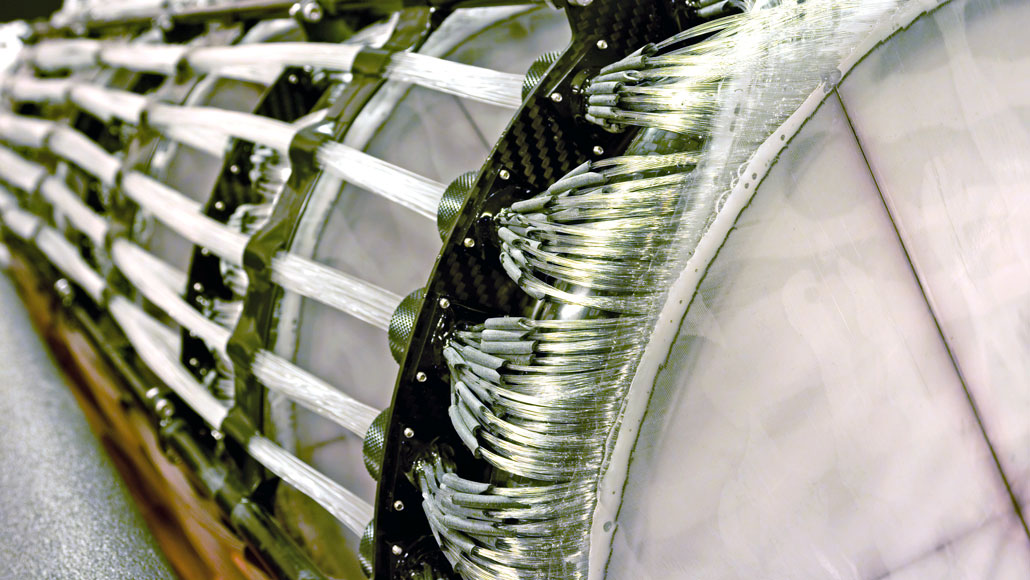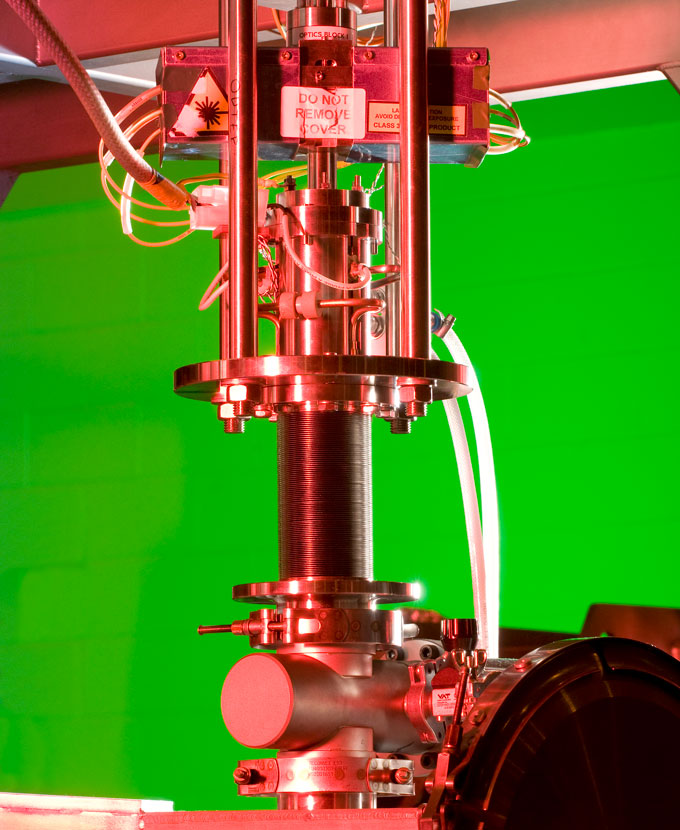A barrier to colliding particles called muons has been smashed
Physicists have now cooled beams of the subatomic particles

Physicists corralled particles called muons in a step toward building a muon collider, using a tracking device (shown) to determine the particles’ locations within a beam.
STFC
From protons to electrons to atomic nuclei, physicists love smashing tiny stuff together. And soon, they may have an even better way to get their kicks.
A new experiment raises prospects for building a particle accelerator that collides particles called muons, which could lead to smashups of higher energies than any engineered before. Scientists with the Muon Ionization Cooling Experiment, or MICE, have cooled a beam of muons, a necessary part of preparing the particles for use in a collider, the team reports online February 5 in Nature.
To study matter at its most fundamental level, physicists smash particles together at high energies and filter through the wreckage. The strategy has revealed previously unknown particles, such as the Higgs boson (SN: 4/4/12), discovered at the Large Hadron Collider at CERN, near Geneva, in 2012.
That 27-kilometer collider is already the biggest machine ever built. To keep searching for new particles, scientists must go to higher energies. The higher a collision’s energy, the heavier particles scientists might be able to discover. Getting to higher energies requires a more powerful accelerator. So scientists are planning even bigger, badder — and pricier — versions of current colliders (SN: 1/22/19).
But colliders that bang protons together, such as the LHC, have a major drawback: Protons are made up of smaller particles called quarks, each of which carries only a fraction of the proton’s energy. That means each particle crash has less oomph. Collisions of fundamental particles like muons, which aren’t made of smaller particles, don’t have that problem.
Some colliders skirt that proton problem by smashing together electrons and their antimatter opposites, positrons. But those machines also have a drawback: electrons and positrons lose energy circling around an accelerator ring by spewing X-rays. Those rays, known as synchrotron radiation, are less important for heavier particles like muons, which are about 200 times as massive as electrons, allowing muons to reach higher energies.
But colliding muons is no simple feat. To create muons, scientists slam a beam of protons into a target, creating other particles that decay and produce muons. Those muons emerge with a variety of different energies and directions. To use the particles in a collider, they must be cooled, or shepherded into an orderly formation, just as cooling a gas reduces the haphazard motion of its atoms.

Without this cooling, muons won’t collide when two beams of the particles are crossed. “The beam is too diffuse, and the muons just miss each other,” says physicist Chris Rogers of Rutherford Appleton Laboratory in Didcot, England. Now, for the first time, Rogers and colleagues have demonstrated muon cooling.
Muons decay into other particles in about two-millionths of a second. So “it was very, very important to find an effective way to cool these muons very fast,” says physicist Nadia Pastrone of the National Institute for Nuclear Physics in Italy, who was not involved with the work.
To perform that rapid cooling, the researchers pass muons through materials, causing the muons to knock electrons off of atoms in the material. That saps some of the muons’ momentum in all directions. Then, the researchers accelerate the muons all in the same direction using electromagnetic fields. Repeating this process multiple times produces a suitably dense, orderly beam.
The method “can drastically change the way we build big accelerators,” says accelerator physicist Vladimir Shiltsev of Fermilab in Batavia, Ill., who is not part of MICE. “What we are talking about right now is the dawn of a new possible era in particle physics and definitely in accelerator beam physics.”







